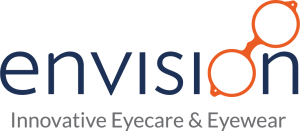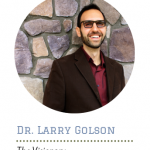A Word to the Wise about Lazy Eyes
Probably the single most important factor in the care and safeguarding of a child’s eyesight is a thorough eye health examination between the ages of three and four years of age.  Many parents assume little can be accomplished at such a young age; however, this is not the case. In fact, there is a good deal of critical information that can be determined, even in babies.
Many parents assume little can be accomplished at such a young age; however, this is not the case. In fact, there is a good deal of critical information that can be determined, even in babies.
A common condition known as amblyopia (lazy eye) is one of the key conditions that can be prevented if its underlying cause can be diagnosed and treated early.
The main causes of amblyopia are:
1. One eye being more farsighted than the other. Children are not aware of this because the more normal of the two eyes will simply take over.
2. One eye having more astigmatism (when the eye is shaped more like an oval football than a spherical basketball) than the other. The better eye takes over in this case also.
3. One eye being turned in or out relative to the straight eye. Family members of the child often detect crossed or deviated eyes.
Since casual observation will not detect that something is amiss in the first two causes, a thorough examination by an eye doctor is the only way a proper diagnosis can be made.
Amblyopia, and the conditions that lead to it, are unilateral in nature—meaning only one eye is affected. While most people with amblyopia function well in life, their depth perception decreases, and this may restrict their choice of occupation to some degree. An important factor to keep in mind is that a person with good eyesight in only one eye should always wear impact-resistant eyeglasses to protect the good eye. This is true even if there is no prescription in the lenses.
Why is it so important to diagnose the conditions that can lead to amblyopia by age three or four?  The central nervous system (specifically the occipital cortex tissues in the back of the brain) can be stimulated and enhanced in children until six to eight years old, thus their vision can more likely be improved. This is especially important for a child’s education and development. Sadly, and far too often, children with amblyopia are not brought into the eye doctor’s office until they realize they see poorly out of one eye. If the child is older than seven or eight, there is little that can be done to improve his or her vision. Studies have shown that children who are successfully treated for eye problems show increased performance in school. With 80% of a child’s learning occurring through the visual system, the significance of treating a condition like amblyopia cannot be overstated. It is for this reason that many states require comprehensive eye exams for children in school. However, it must be stressed that vision screenings are not standardized and that it is not uncommon for a condition important to your child’s visual development to be missed. Three states: Illinois, Missouri and Kentucky require a full eye health examination for school children; this is a standardized evaluation from a licensed optometrist that checks for eye health as well as potential vision problems.
The central nervous system (specifically the occipital cortex tissues in the back of the brain) can be stimulated and enhanced in children until six to eight years old, thus their vision can more likely be improved. This is especially important for a child’s education and development. Sadly, and far too often, children with amblyopia are not brought into the eye doctor’s office until they realize they see poorly out of one eye. If the child is older than seven or eight, there is little that can be done to improve his or her vision. Studies have shown that children who are successfully treated for eye problems show increased performance in school. With 80% of a child’s learning occurring through the visual system, the significance of treating a condition like amblyopia cannot be overstated. It is for this reason that many states require comprehensive eye exams for children in school. However, it must be stressed that vision screenings are not standardized and that it is not uncommon for a condition important to your child’s visual development to be missed. Three states: Illinois, Missouri and Kentucky require a full eye health examination for school children; this is a standardized evaluation from a licensed optometrist that checks for eye health as well as potential vision problems.
The two-step treatment of amblyopia is relatively straightforward. First, precision-matched eyeglasses are prescribed to fully correct the vision in each eye. This provides clear, crisp images focused on the retina in the back of the eye. These sharp images are then transmitted to the optic nerve to reach the occipital cortex where special vision cells are sufficiently stimulated so that they can develop to their fullest potential.
 The second step in treating amblyopia is to selectively patch the “good” (stronger) eye. This forces the weaker eye (the amblyopic eye) to begin to be used more. This forced use of the amblyopic eye is what stimulates the specialized vision cells in the brain to develop properly, thereby allowing good vision development in both eyes. Usually, special dilating drops are used by the doctor to determine the exact prescription for the child. Of course, every patient with amblyopia is unique, so the duration and outcome of patching therapy will vary depending on the visual status of each patient.
The second step in treating amblyopia is to selectively patch the “good” (stronger) eye. This forces the weaker eye (the amblyopic eye) to begin to be used more. This forced use of the amblyopic eye is what stimulates the specialized vision cells in the brain to develop properly, thereby allowing good vision development in both eyes. Usually, special dilating drops are used by the doctor to determine the exact prescription for the child. Of course, every patient with amblyopia is unique, so the duration and outcome of patching therapy will vary depending on the visual status of each patient.
Here are some behaviors that might be observed in young children with potential vision problems:
- Frequent eye rubbing
- Excessive blinking
- Squinting
- Covering or closing one eye
- Stumbling over small objects
Any of these activities should prompt a visit to the eye doctor, but even if no such behaviors are seen, each child should have a comprehensive eye exam by age three or four.
To facilitate awareness and detection of early childhood eye conditions, Envision Eyecare provides complimentary eye screenings for infants between six and twelve months of age as part of the American Optometric Association’s Infant See program.
If you have any questions about eye health exams for children or to schedule a yearly eye health exam for you or for your child, please call us at 828-254-6757.
Your Envision Eyecare Team




